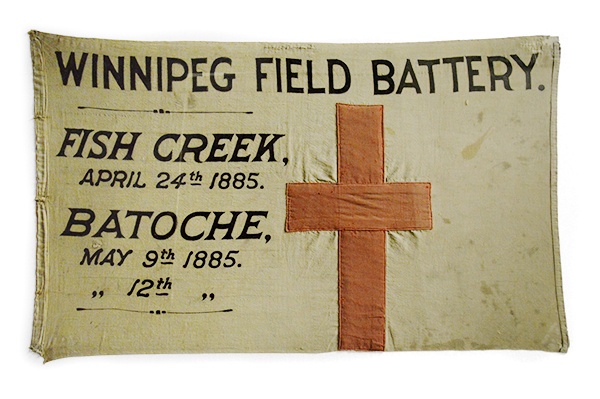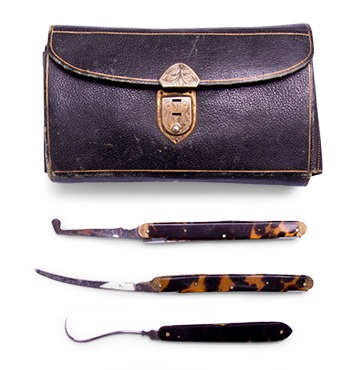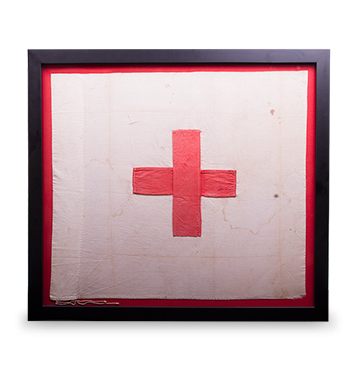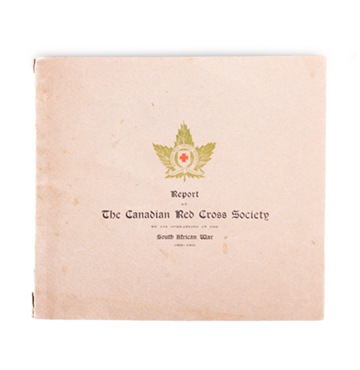Codd Flag
April 24, 1885: In the chaos of a battle over Canada’s new western territories, this flag became the first recorded use of the red cross emblem in Canada for Geneva Convention-approved purposes. It was created and used by Lieutenant-Colonel Alfred Codd, during the Battle of Fish Creek in present-day Saskatchewan.
In 1885 Codd was an experienced 42-year-old military surgeon attached to the Winnipeg Field Battalion. The battalion was sent west that year to help quell Métis and Aboriginal peoples fighting back against Euro-Canadian expropriation of their lands. This conflict is now known as the North West Rebellion.
Codd’s large homemade flag presents a Christian-style cross rather than the officially approved short-limbed Geneva version, but served the same purpose of distinguishing the medical personnel of the militia as they removed or tended to their battlefield wounded. The black text on the flag was added sometime after the conclusion of hostilities, to commemorate the battalion’s participation in three battles of the rebellion. This transformation of the flag into a military souvenir clearly associated with the battalion is likely the reason it was initially preserved.
There was no Red Cross Society in Canada in 1885, but the fact that Codd improvised his own Red Cross flag makes it clear that at least a rudimentary understanding of the Geneva Conventions existed in the Canadian militia by this point. The first Geneva Convention (1864), an international treaty sponsored by the International Committee of the Red Cross, conferred neutrality on medical personnel tending to sick and wounded combatants. Such personnel were to be distinguished by the emblem of the short-limbed Geneva-style red cross.
April 24, 1885: In the chaos of a battle over Canada’s new western territories, this flag became the first recorded use of the red cross emblem in Canada for Geneva Convention-approved purposes. It was created and used by Lieutenant-Colonel Alfred Codd, during the Battle of Fish Creek in present-day Saskatchewan.
In 1885 Codd was an experienced 42-year-old military surgeon attached to the Winnipeg Field Battalion. The battalion was sent west that year to help quell Métis and Aboriginal peoples fighting back against Euro-Canadian expropriation of their lands. This conflict is now known as the North West Rebellion.
Codd’s large homemade flag presents a Christian-style cross rather than the officially approved short-limbed Geneva version, but served the same purpose of distinguishing the medical personnel of the militia as they removed or tended to their battlefield wounded. The black text on the flag was added sometime after the conclusion of hostilities, to commemorate the battalion’s participation in three battles of the rebellion. This transformation of the flag into a military souvenir clearly associated with the battalion is likely the reason it was initially preserved.
There was no Red Cross Society in Canada in 1885, but the fact that Codd improvised his own Red Cross flag makes it clear that at least a rudimentary understanding of the Geneva Conventions existed in the Canadian militia by this point. The first Geneva Convention (1864), an international treaty sponsored by the International Committee of the Red Cross, conferred neutrality on medical personnel tending to sick and wounded combatants. Such personnel were to be distinguished by the emblem of the short-limbed Geneva-style red cross.




